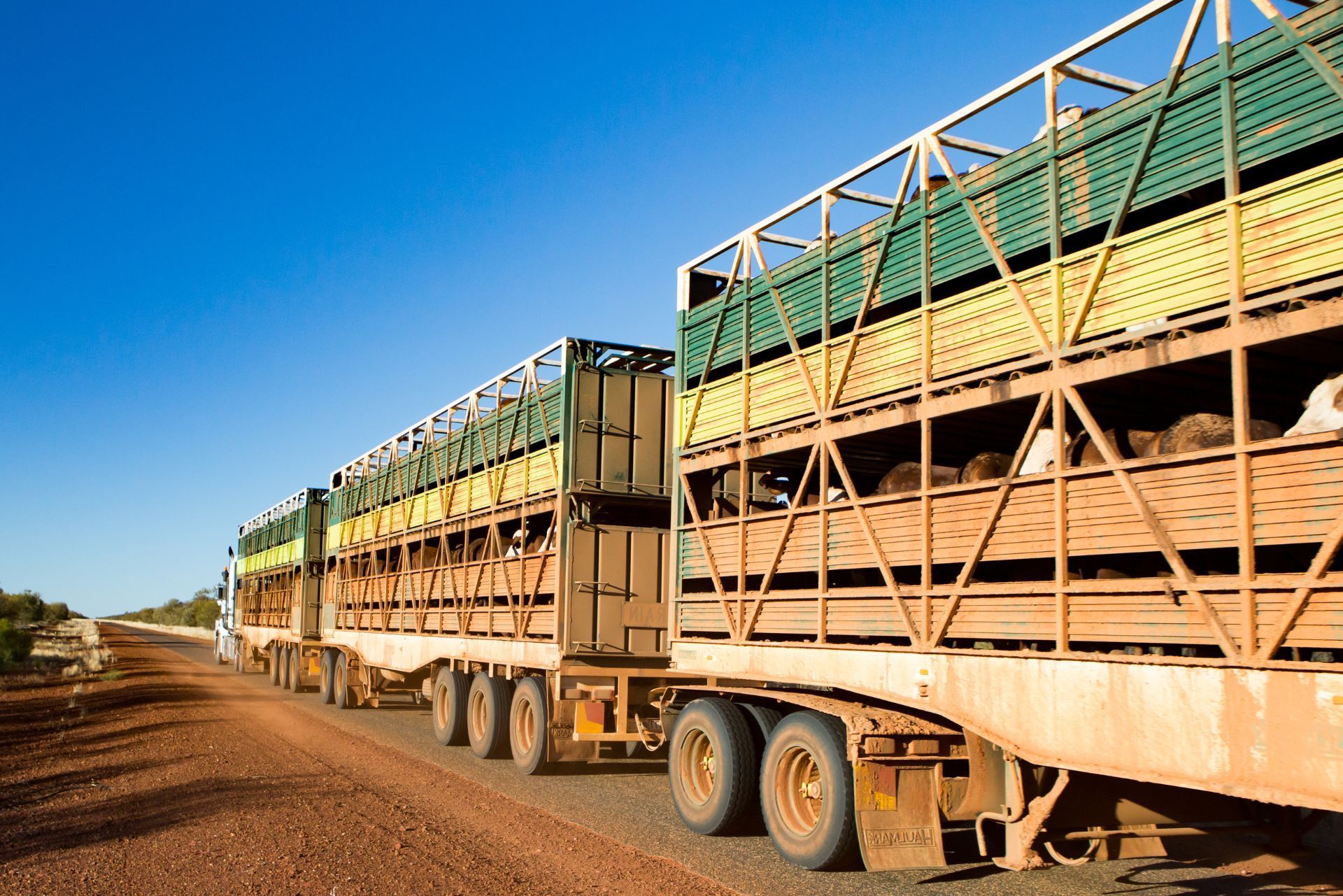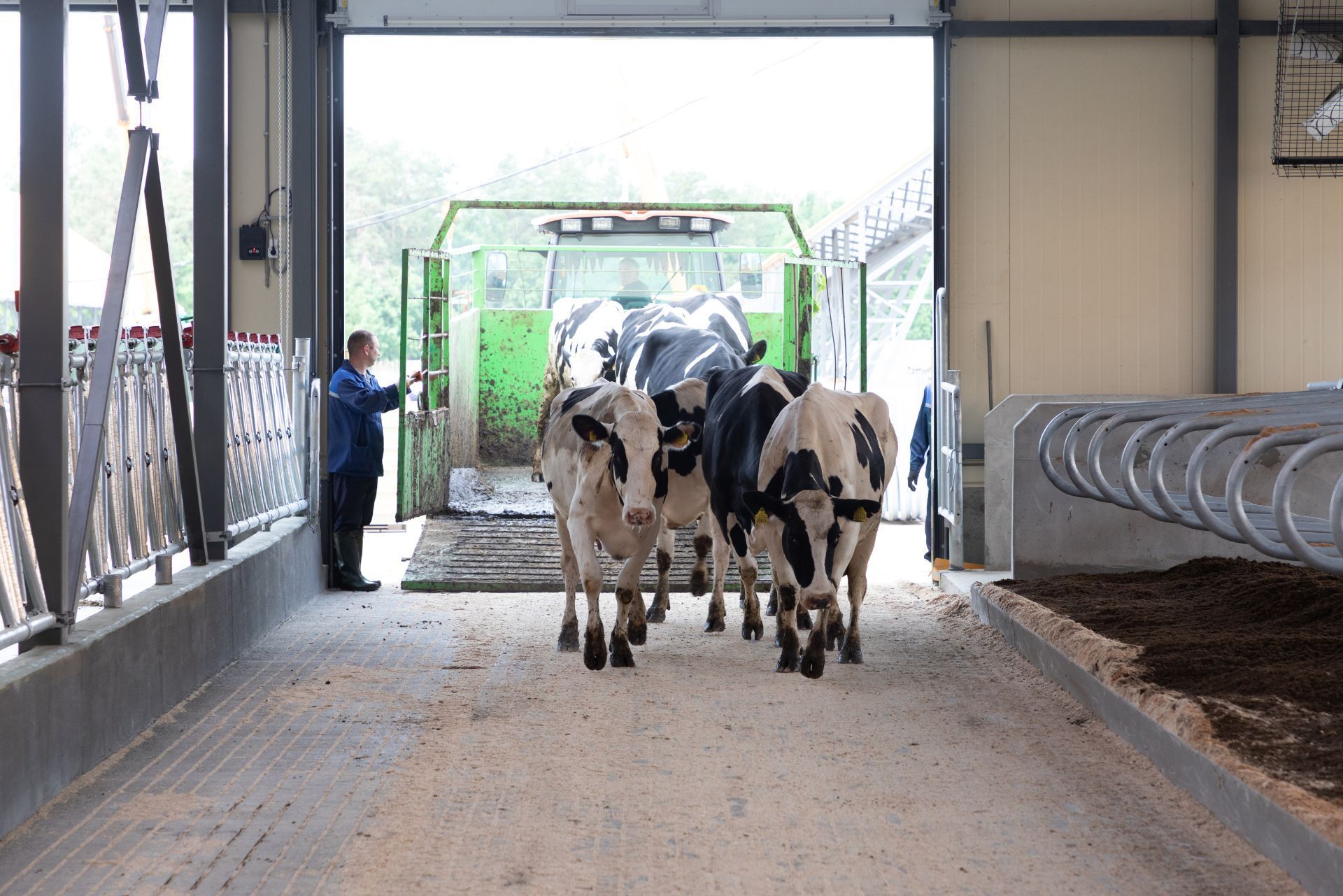
Top 3 Recommended Policies

Transporting livestock is a critical component of the agricultural industry. Livestock transit haulers play a vital role in ensuring that animals reach their destinations safely and efficiently. However, this essential service comes with its own set of risks and challenges. To protect against these potential hazards, livestock transit haulers must consider obtaining specialized insurance. This guide will explore the intricacies of livestock transit haulers insurance, providing insights into coverage options, legal requirements, and best practices for securing the right policy.
Understanding Livestock Transit Haulers Insurance
Livestock transit haulers insurance is a specialized form of coverage designed to protect businesses involved in the transportation of livestock. This insurance addresses the unique risks associated with hauling animals, including injury, death, and property damage. Understanding the components of this insurance is essential for haulers to ensure they have adequate protection.
What Does Livestock Transit Haulers Insurance Cover?
The coverage provided by livestock transit haulers insurance can vary significantly depending on the policy and provider. Generally, policies may include:
- Liability Coverage: This protects against claims arising from injuries or damages caused during the transportation process.
- Animal Mortality Coverage: This covers losses due to the death of livestock while in transit, providing financial support for the loss of valuable animals.
- Physical Damage Coverage: This protects the hauler's vehicles and equipment against damage from accidents or other incidents.
- Cargo Insurance: This specifically covers the livestock being transported, ensuring that the animals are protected against various risks.
Understanding these coverage options is crucial for haulers to tailor their insurance policies to their specific needs and risks. Additionally, many providers offer customizable options that allow haulers to add endorsements or riders to their policies, enhancing coverage for specific scenarios, such as extreme weather conditions or long-distance transport. This flexibility ensures that haulers can adapt their insurance to the evolving nature of their operations and the specific challenges they face in the field.
Why Is Insurance Necessary for Livestock Transit Haulers?
Insurance is not just a legal requirement; it is a vital safety net for livestock transit haulers. The transportation of animals involves numerous risks, including:
- Accidents: Collisions or rollovers can lead to significant losses, both in terms of property and livestock.
- Health Risks: Animals can become injured or ill during transit, leading to potential liability issues.
- Legal Compliance: Many states require haulers to carry specific insurance to operate legally.
Having the right insurance in place helps mitigate these risks, providing peace of mind and financial protection against unforeseen events. Furthermore, the livestock industry is heavily regulated, and compliance with these regulations often requires proof of adequate insurance coverage. This not only protects the hauler but also builds trust with clients and stakeholders, ensuring that all parties are safeguarded against potential liabilities. Moreover, in the event of an incident, having comprehensive insurance can expedite the claims process, allowing haulers to recover more swiftly and maintain their operations with minimal disruption.
Types of Coverage Available
When selecting livestock transit haulers insurance, it is essential to understand the different types of coverage available. Each type serves a unique purpose and addresses specific risks associated with transporting livestock. Understanding these options can help ensure that haulers are adequately protected against potential liabilities and unforeseen circumstances that may arise during transit.
General Liability Insurance
General liability insurance is a foundational coverage that protects against claims of bodily injury or property damage resulting from the hauler's operations. This type of insurance is crucial for any business, including livestock transporters, as it covers legal fees and settlements if a claim is filed against the hauler. Additionally, it can cover incidents that occur on the premises of the hauler's business, such as injuries to visitors or damage to third-party property. This broad protection is vital in maintaining the reputation and financial stability of a livestock transport operation.
Commercial Auto Insurance
Since livestock transit involves the use of vehicles, commercial auto insurance is a critical component of coverage. This insurance protects against damages resulting from accidents involving the vehicles used to transport livestock. It covers not only the vehicles but also any liability that may arise from their use. Furthermore, commercial auto insurance can include coverage for physical damage to the vehicles themselves, ensuring that repair costs do not burden the business. Given the unique challenges of transporting livestock, such as navigating rural roads and managing unpredictable animal behavior, having robust commercial auto insurance is essential for mitigating risks associated with vehicle operation.
Cargo Insurance
Cargo insurance is specifically designed to protect the livestock being transported. This coverage ensures that if the animals suffer injury or death during transit, the hauler is financially protected. Cargo insurance can be tailored to cover various types of livestock, from cattle to poultry, making it an essential consideration for haulers. Additionally, it may also cover losses due to theft or damage caused by environmental factors, such as extreme weather conditions. Given the high value of livestock and the potential financial losses that can occur from accidents, having comprehensive cargo insurance is not only a smart business decision but also a necessary safeguard for the welfare of the animals being transported.
Workers' Compensation Insurance
Workers' compensation insurance is another vital coverage that protects employees working in the livestock transportation industry. This insurance provides benefits to workers who may suffer injuries while on the job, covering medical expenses and lost wages. Given the physical nature of the work involved in loading, unloading, and caring for livestock during transit, having workers' compensation insurance is essential for ensuring the safety and well-being of employees. Moreover, it helps businesses maintain compliance with state regulations, as many jurisdictions require this type of coverage for employers. By investing in workers' compensation, livestock haulers not only protect their workforce but also foster a culture of safety and responsibility within their operations.

Legal Requirements for Livestock Transit Haulers
In addition to the various types of insurance coverage available, livestock transit haulers must also be aware of the legal requirements governing their operations. These requirements can vary by state and country, so understanding the regulations in the areas where the hauler operates is crucial. Compliance not only helps in avoiding penalties but also ensures the welfare of the animals being transported, which is a significant concern in the livestock industry.
State Regulations
Many states have specific regulations regarding the transportation of livestock, which often include minimum insurance coverage requirements. Haulers must ensure they comply with these regulations to avoid fines or legal issues. This may involve obtaining proof of insurance and meeting specific safety standards for vehicles and transport practices. Additionally, some states require haulers to undergo training or certification programs that focus on animal welfare during transport, emphasizing the importance of humane treatment and proper handling techniques.
Federal Regulations
In the United States, the Federal Motor Carrier Safety Administration (FMCSA) regulates the transportation of livestock across state lines. Livestock haulers must adhere to federal guidelines, which may include maintaining specific levels of insurance coverage and ensuring that vehicles meet safety standards. Understanding these regulations is essential for haulers operating in interstate commerce. Furthermore, the Animal Welfare Act mandates that animals are transported in a manner that minimizes stress and suffering, requiring haulers to be knowledgeable about best practices in animal care during transit. This includes ensuring adequate ventilation, food, and water, as well as appropriate space for the animals being transported.
Documentation and Record-Keeping
Another critical aspect of legal compliance for livestock transit haulers is maintaining proper documentation and record-keeping. Haulers are often required to keep detailed logs of their trips, including the origin and destination of the animals, the time spent in transit, and any incidents that may occur during transportation. This documentation serves not only as a legal safeguard but also as a means to track the health and welfare of the animals. In some cases, haulers may need to present this information during inspections or audits by regulatory agencies, making meticulous record-keeping essential for smooth operations.
Environmental Considerations
In addition to animal welfare and safety regulations, livestock transit haulers must also be mindful of environmental regulations that may impact their operations. This can include adhering to guidelines for waste management, particularly regarding the disposal of manure and other byproducts generated during transport. Some states have enacted strict laws to protect water quality and public health, which can influence how haulers manage their vehicles and operations. By understanding and complying with these environmental regulations, haulers not only protect their businesses from legal repercussions but also contribute to sustainable practices within the livestock industry.
Choosing the Right Insurance Provider
Selecting the right insurance provider is a crucial step in securing adequate coverage for livestock transit operations. Not all insurance companies offer the same level of expertise or understanding of the unique risks involved in transporting livestock.
Researching Insurance Providers
When searching for an insurance provider, it is essential to conduct thorough research. Look for companies that specialize in agricultural or livestock transportation insurance. These providers will have a better understanding of the risks involved and can offer tailored coverage options.
Comparing Quotes
Once potential providers have been identified, obtaining quotes from multiple companies is a wise strategy. Comparing quotes allows haulers to assess coverage options, premiums, and deductibles. It is essential to consider not only the cost but also the level of coverage and customer service offered by each provider.
Best Practices for Livestock Transit Haulers
To minimize risks and ensure smooth operations, livestock transit haulers should adopt best practices in their transportation processes. These practices can help reduce the likelihood of accidents and claims, ultimately leading to lower insurance premiums and enhanced safety.
Regular Vehicle Maintenance
Maintaining vehicles in optimal condition is crucial for the safety of both the hauler and the livestock being transported. Regular inspections, servicing, and repairs can prevent breakdowns and accidents on the road. Keeping detailed maintenance records can also be beneficial when filing insurance claims.
Training and Certification
Ensuring that drivers are well-trained and certified in livestock handling and transportation is essential. Proper training can reduce the risk of accidents and improve the overall welfare of the animals during transit. Many organizations offer training programs specifically designed for livestock transporters.
Implementing Safety Protocols
Establishing and following strict safety protocols can significantly reduce risks during transportation. This includes ensuring that vehicles are loaded correctly, monitoring the health of the animals during transit, and having emergency plans in place. Regular safety meetings can help reinforce these protocols among staff.
Understanding Premiums and Deductibles
Insurance premiums and deductibles are critical components of any insurance policy. Understanding how these factors work can help livestock transit haulers make informed decisions when selecting coverage.
Factors Affecting Premiums
Several factors can influence the premiums for livestock transit haulers insurance, including:
- Type of Coverage: More comprehensive coverage typically comes with higher premiums.
- Driving History: A clean driving record can lead to lower premiums, while a history of accidents may increase costs.
- Type of Livestock Transported: The species and value of the livestock being transported can also impact premiums.
Understanding these factors can help haulers anticipate costs and budget accordingly.
Choosing a Deductible
The deductible is the amount the policyholder must pay out of pocket before the insurance coverage kicks in. A higher deductible often results in lower premiums, but it also means more financial responsibility in the event of a claim. Haulers should carefully consider their financial situation when selecting a deductible that balances affordability with adequate coverage.

Claims Process for Livestock Transit Haulers Insurance
Understanding the claims process is essential for livestock transit haulers to ensure they can navigate it smoothly in the event of an incident. Knowing what to expect can help minimize stress and expedite the resolution of claims.
Steps to File a Claim
When an incident occurs, the following steps should be taken to file a claim:
- Notify the Insurance Provider: Contact the insurance company as soon as possible to report the incident and initiate the claims process.
- Document the Incident: Gather evidence, including photographs, witness statements, and any relevant documentation related to the incident.
- Complete Claim Forms: Fill out any necessary claim forms provided by the insurance company, ensuring all information is accurate and complete.
Common Challenges in the Claims Process
While filing a claim may seem straightforward, haulers may encounter challenges along the way. Common issues include:
- Disputes Over Coverage: Insurance companies may dispute the validity of a claim based on policy terms.
- Delays in Processing: Claims can take time to process, leading to frustration for haulers needing immediate assistance.
- Insufficient Documentation: Failing to provide adequate documentation can result in claim denials or delays.
Being prepared and understanding the claims process can help mitigate these challenges, ensuring a smoother experience.
The Future of Livestock Transit Haulers Insurance
The insurance landscape is continually evolving, influenced by advancements in technology, changes in regulations, and shifts in market demands. Understanding these trends can help livestock transit haulers prepare for the future.
Technological Advancements
Technology is playing an increasingly significant role in the livestock transportation industry. Innovations such as GPS tracking, telematics, and automated reporting systems are enhancing safety and efficiency. Insurance providers may begin to offer incentives for haulers who adopt these technologies, potentially leading to lower premiums and improved coverage options.
Regulatory Changes
As the agricultural industry evolves, so too do the regulations governing livestock transportation. Haulers must stay informed about changes in federal and state laws that may impact insurance requirements. Engaging with industry associations and participating in training programs can help haulers remain compliant and knowledgeable about their obligations.
Conclusion
Livestock transit haulers insurance is an essential aspect of operating a successful livestock transportation business. By understanding the various types of coverage, legal requirements, and best practices, haulers can secure the protection they need to navigate the risks associated with their operations. As the industry continues to evolve, staying informed and adaptable will be key to ensuring long-term success in livestock transportation.
Investing in the right insurance coverage not only protects haulers financially but also enhances the overall welfare of the livestock being transported. By prioritizing safety, compliance, and education, livestock transit haulers can thrive in a competitive and ever-changing industry.
Contact Us

